Engage. Explore. Evolve:
Redesigning SFMOMA for All
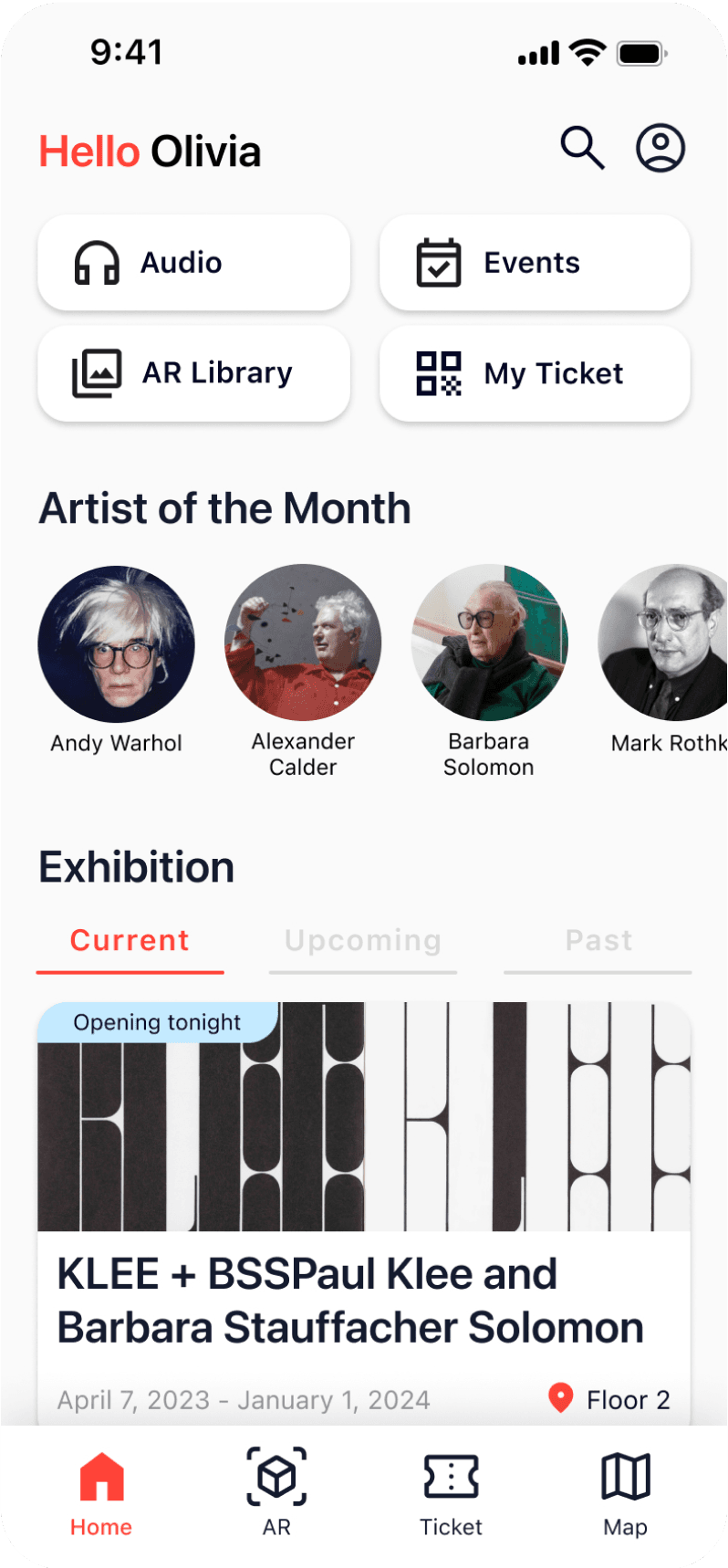
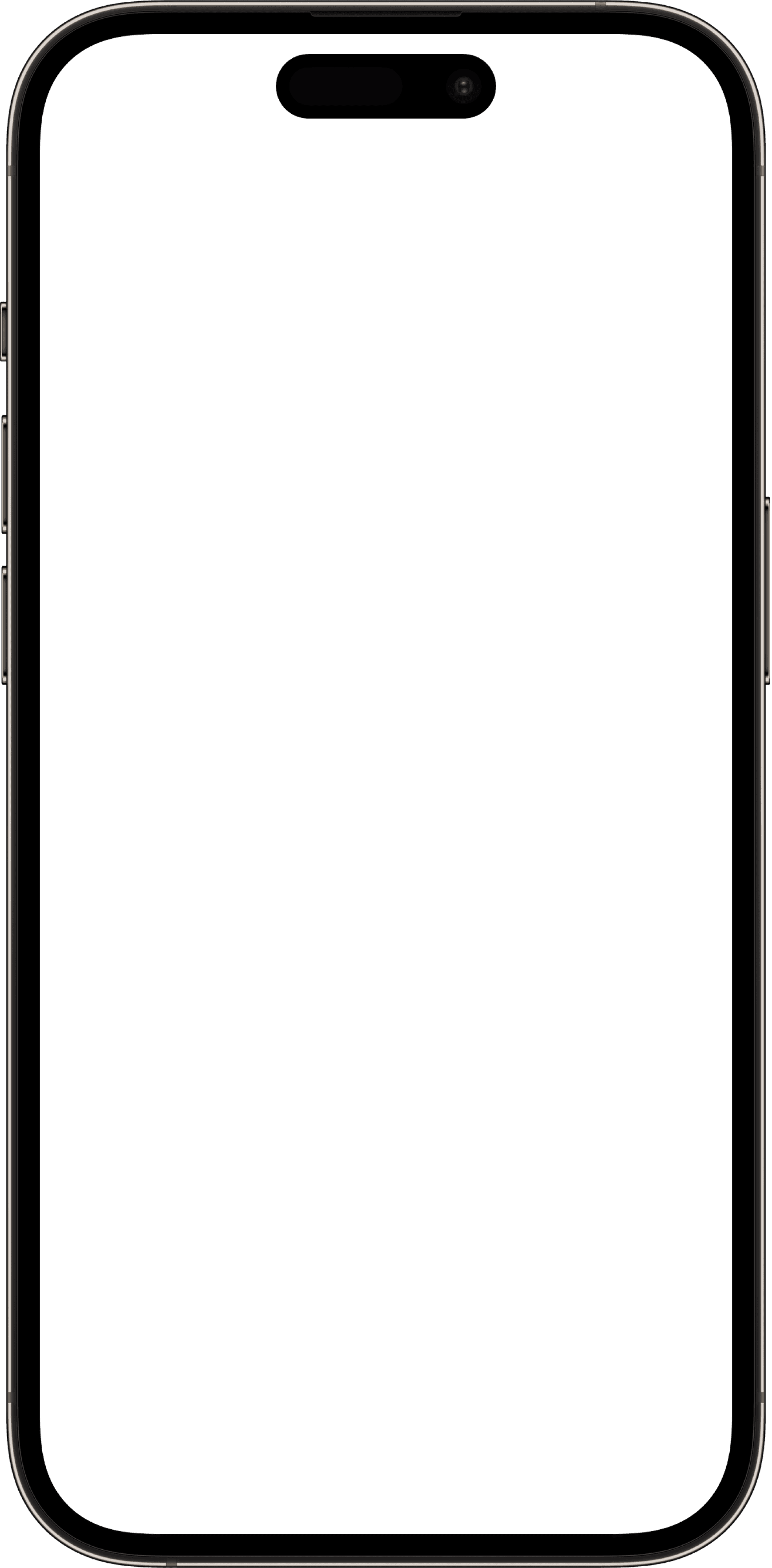
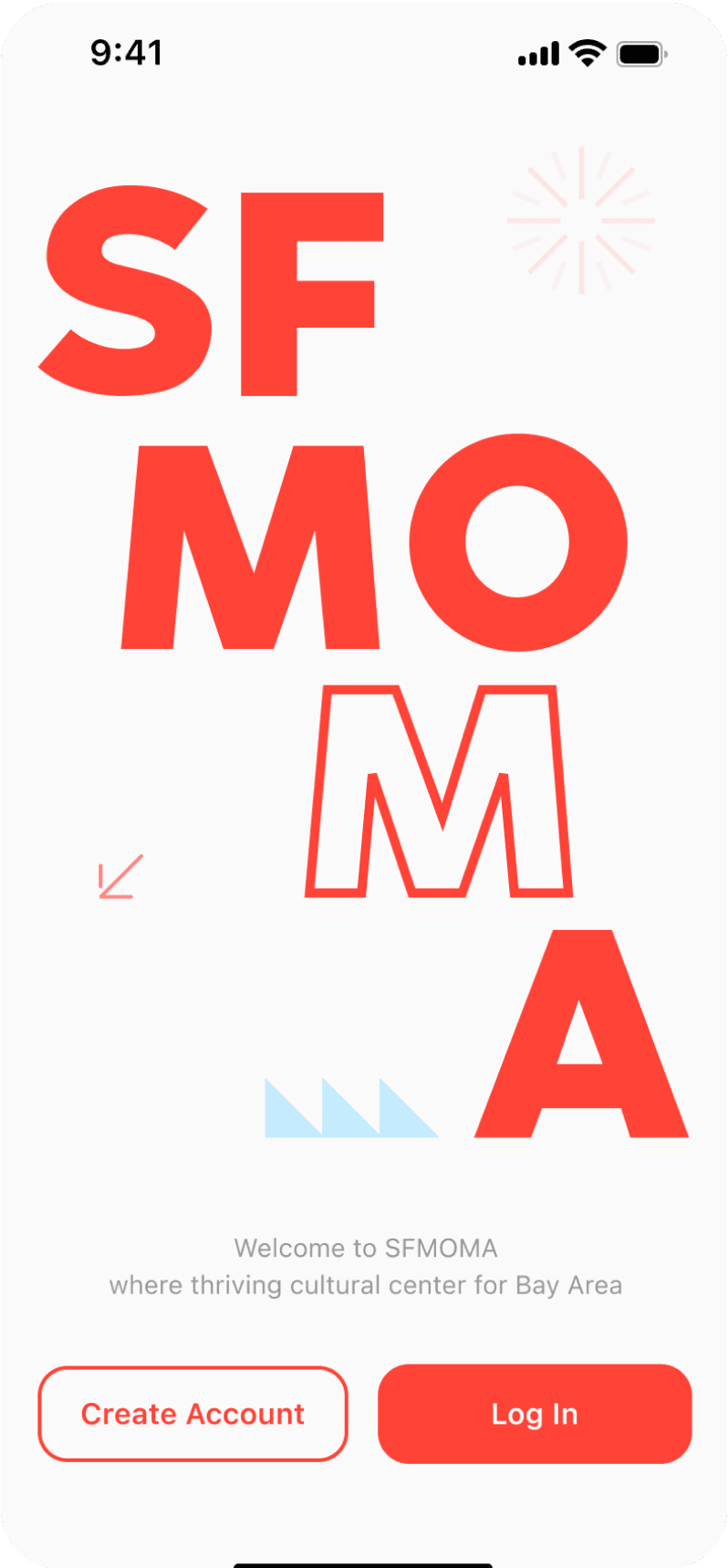

Redesign Mobile
Gamified AR
Art Museum
Making Modern Art More Approachable
With a background in Fine Art, I enjoyed every second exploring SFMOMA’s collections. But I began to notice that not everyone shared the same experience. Many of my friends felt unsure, disconnected, or even intimidated in art museums, and would often ask me, "How do I even enjoy a museum?"
It inspired me to redesign the SFMOMA app to help visitors build confidence, curiosity, and a personal connection with the artworks around them.
Role
uX designer
Timeline
March - July 2023
Project
Personal Project
tools
Figma/Figjam
Spark AR | spline
Overview
Problem
The SFMOMA app’s low visibility, outdated content, and lack of interactive features make it difficult to engage visitors meaningfully.
Many visitors are unaware of the app, and those who use it find it unhelpful in deepening their connection with the museum. Without engaging tools or meaningful content, the app misses the chance to make art more accessible and visits more enriching.
Note: as of April 2023, SFMOMA discontinued the app service.
Solution
Leverage gamified AR “art hunts” and interactive features to turn passive viewing into an engaging, personalized museum journey.
By letting visitors “collect” virtual artworks as they explore, and pairing this with richer exhibition details, a location‑aware map, and seamless ticketing, the app encourages deeper discovery, longer dwell times, and stronger personal connections with modern art.
Design Process

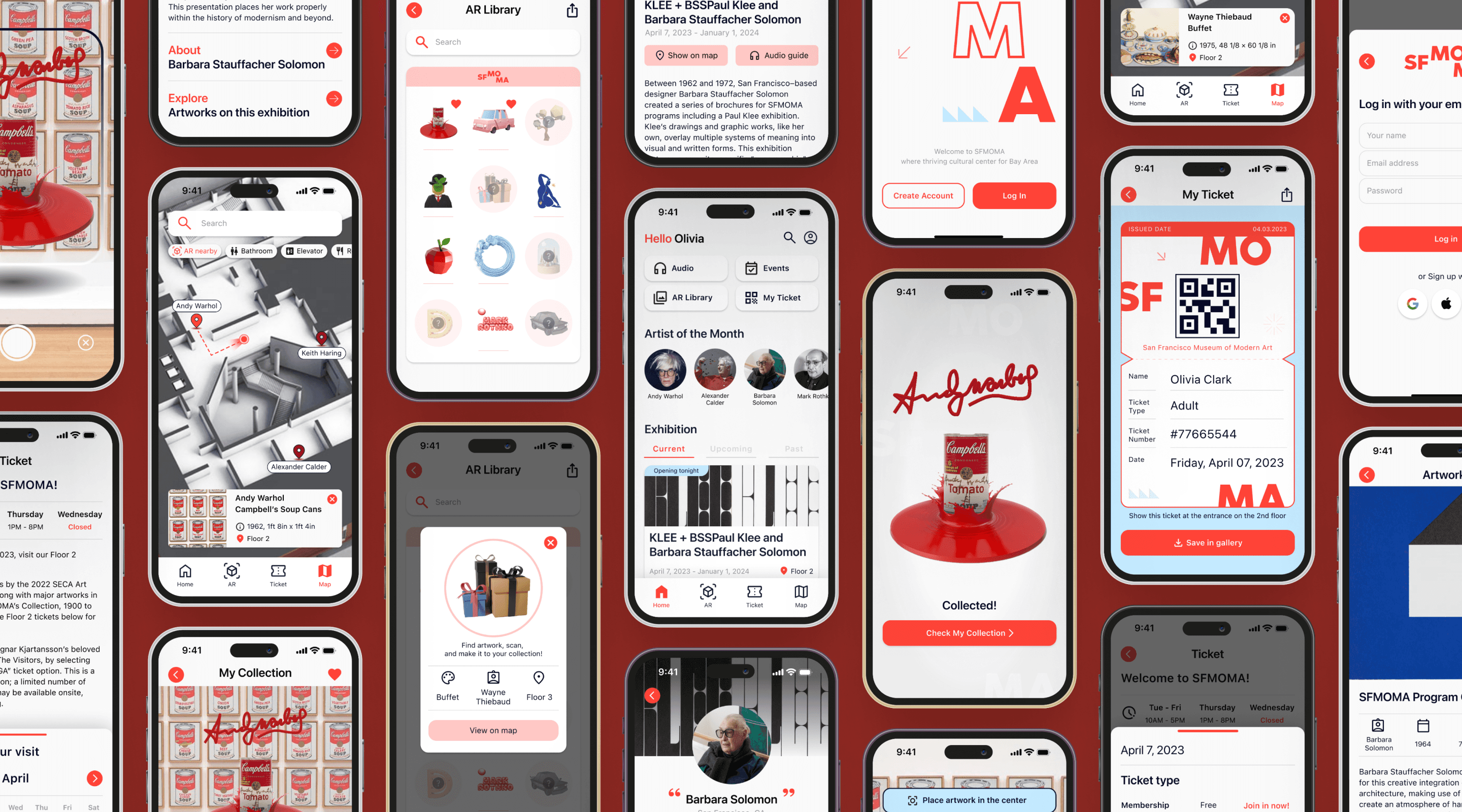
Key Features
AR Art Hunt!
Entertainment with new insights
Not just passing by artworks, the app encourage user engagement through interactive and immersive experiences.
Exhibition Information
Comprehensive Exhibition Details
With up-to-date information about exhibitions and deeper understanding of the exhibitions, it offer richer experience to everyone.
Location-Aware Navigation
Find AR Artworks Nearby
Never get lost or miss the exhibition. Location-aware map guide users to destination.
Discovery
So, how does the app look like now?
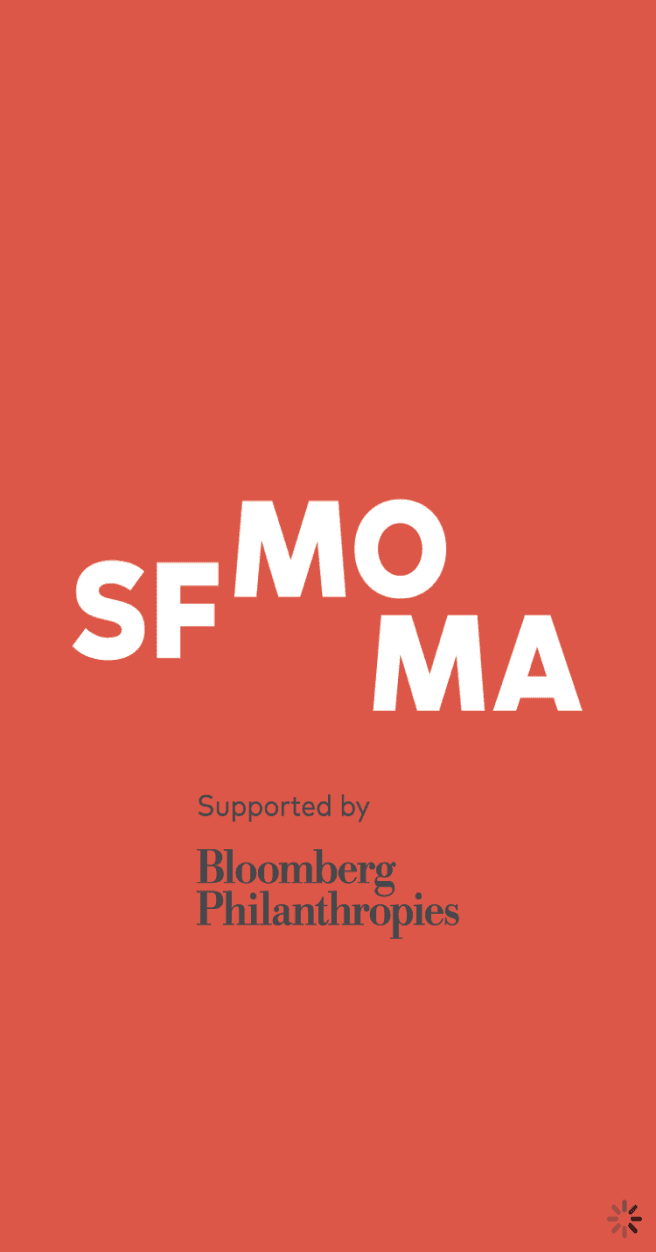
Landing

Home

Tickets
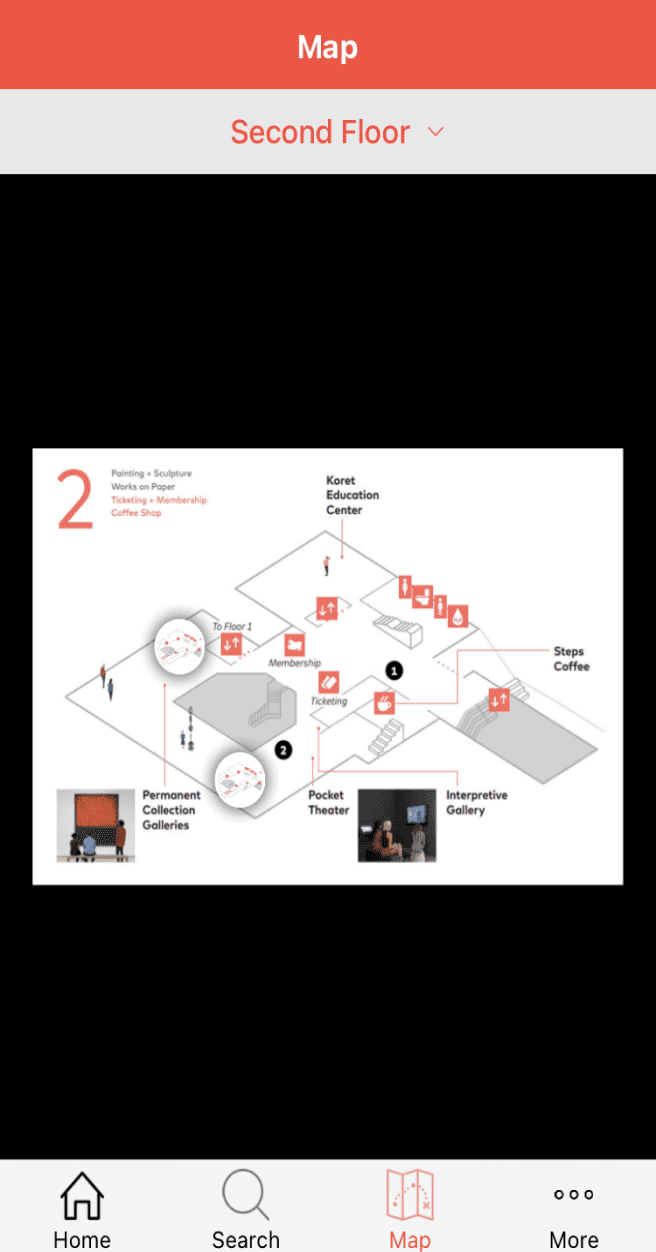
Map
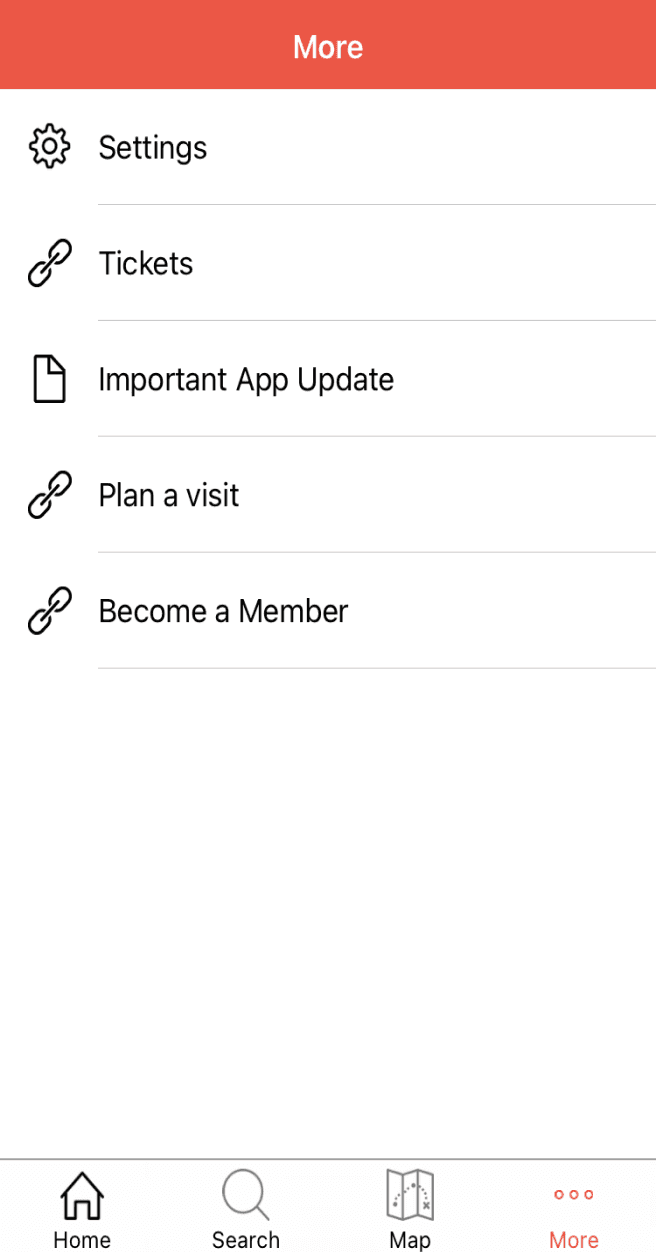
More
Limited available information about the artists and exhibitions, and some of it is outdated and insufficient for a satisfying experience.
The oversized buttons, confusing icons, and flat image map make it challenging for users to intuitively navigate and explore the museum.
Pain Points & Opportunity Areas
Through analyzing user interview data and conducting observation research, I identified the key challenges that museum visitors face and uncovered critical gaps in SFMOMA's mobile service. From these insights, I condensed the findings into 2 major pain points in needs of address.
Inefficiency of the Current App
▲ The current app has outdated design and information are not updated properly. Hence, visitors have to rely on external tools or physical guides to find information related to exhibitions.
Streamline App Functionality
● Provide up-to-date information about artists and exhibitions.
● In-app ticketing and intuitive navigation features for smoother interaction with physical space.
Lack of Accessibility and Engagement
▲ Visitors come from diverse backgrounds and with varying levels of art knowledge. The current app lack of bridging the gap for those who may feel disconnected or unsure of how to engage with the art.
Make Art Interactive
● Utilize feature that build connection with user. For more engaging experience throughout pre- and post-museum experience, the app needs to make the art more relatable to each visitor.
Research 1
Observational Research & User Interview
To better understand the experience at SFMOMA, I went to museum and observed how visitors interact with the space and artworks. Additionally, I conducted interviews with 5 individuals who have visited SFMOMA, discussing on their needs and expectations.



What is the barrier between visitors and museum?
0% were aware of the SFMOMA app’s existence
Out of 5 interview participants, none of them have ever used or known about the museum's app.
Missing chance as camera-friendly museum
3 out of 5 participants appreciated SFMOMA being camera-friendly, with one user noting, “I like how SFMOMA is being camera-friendly, unlike other museums.”
Exhausting waiting in long ticket lines
Several visitors expressed frustration with the long ticketing lines. I was also had to wait for 20+ minutes to get the ticket. It highlighted the need for a more efficient solution.
Different engagement levels among visitors
I found various range of visitors experience the museum differently. Some said they highly engaged with exhibitions but some were not enjoyed their time in museum at all.
Design Challenge
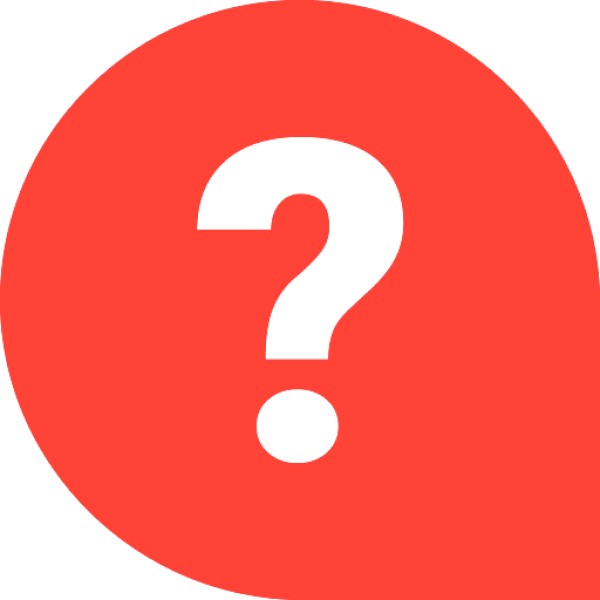
"How might we enhance the SFMOMA experience by leveraging AR, improving app functionality, and embracing its photography-positive atmosphere to create engaging, accessible, and personalized interactions for all visitors?"
Research 2
Why Augmented Reality? and why collect them?
Bring Entertainment
Inspired from the mobile game 'Pokémon Go', interacting AR in physical space can naturally encourage users to explore the museum.
Break the Boundaries
Making opportunities to AR artists to present their works collaborating with artworks of masters in the museum.
Psychology of Collecting
Following the article, collecting something brings joy and sense of achievement. The activity of collecting AR artworks can build personal connection and sense of accomplishment.
Pokémon Go

User Persona

Ebony
San Francisco, CA
Art School Student
21 years old
Goal
“I want to know stories of artist and their artworks to fully enjoy the exhibition. With deeper depth of understanding, enjoyment expand accordingly!”
Pain point
▲ Searching around every paintings and artists takes extra time.
▲ Hard to know what exhibitions are currently on view or not.

Jeff
San Jose, CA
Software engineer
48 years old
Goal
“I seeking for new sources of excitement that can evoke my creativity and take me away from the work.”
Pain point
▲ Visit museum with friends, but Jeff easily get bored and distracted by others.
▲ Desire to explore but there are lack of sources to understand artist's meaning behind the artwork.
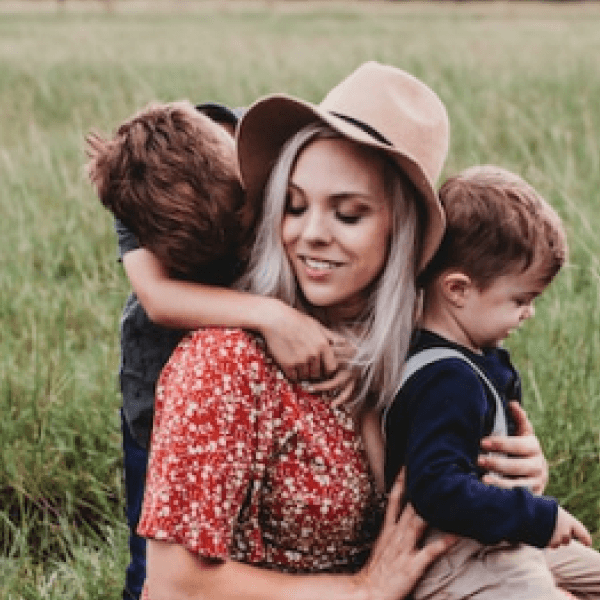
Olivia
Mom of two sons
Berkeley, CA
36 years old
Goal
“I like to go to museums with my kids on weekends and let them explore arts. I hope museum to be easy to access for both parents and kids.”
Pain point
▲ Waiting in long ticket line is frustrating especially when I'm with my sons.
▲ Looking for museum facilities and exhibition location is hard.
Ideation
Low Fidelity Sketches
I started with drawing interface with potential solutions to organize my thoughts and flows.
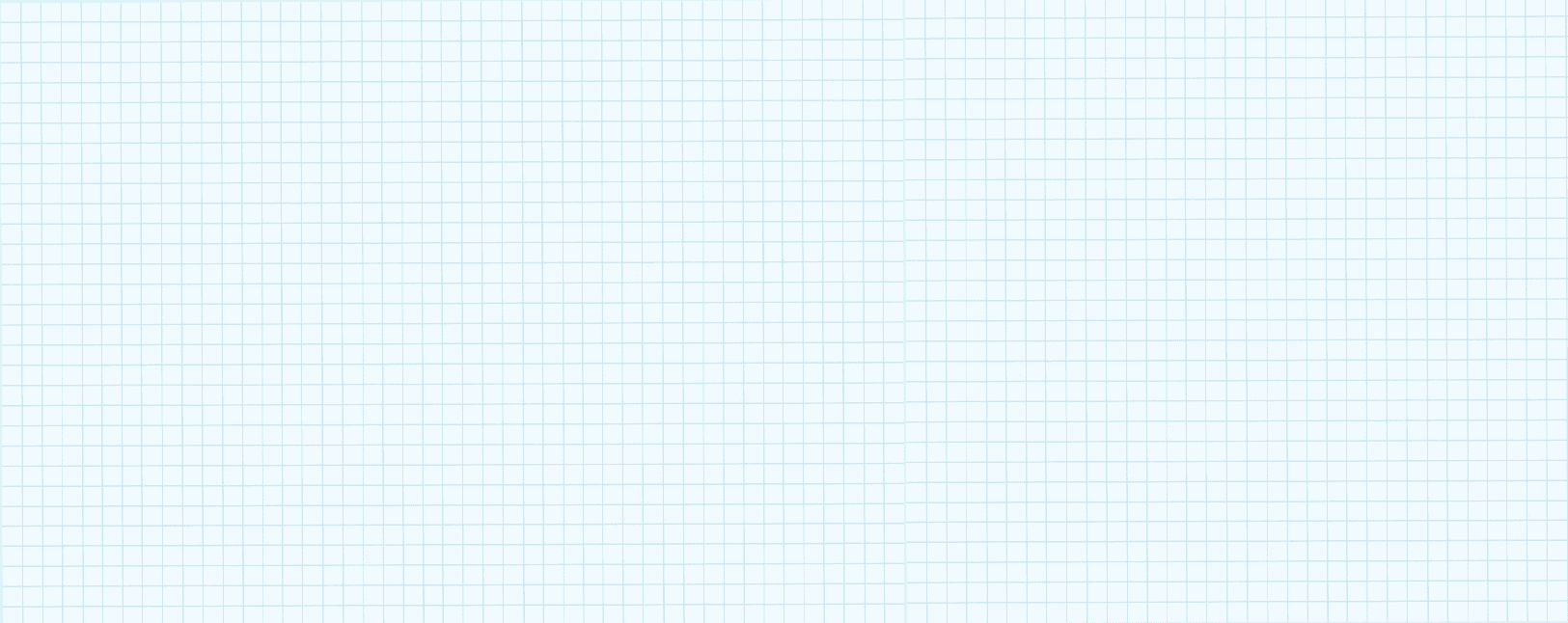
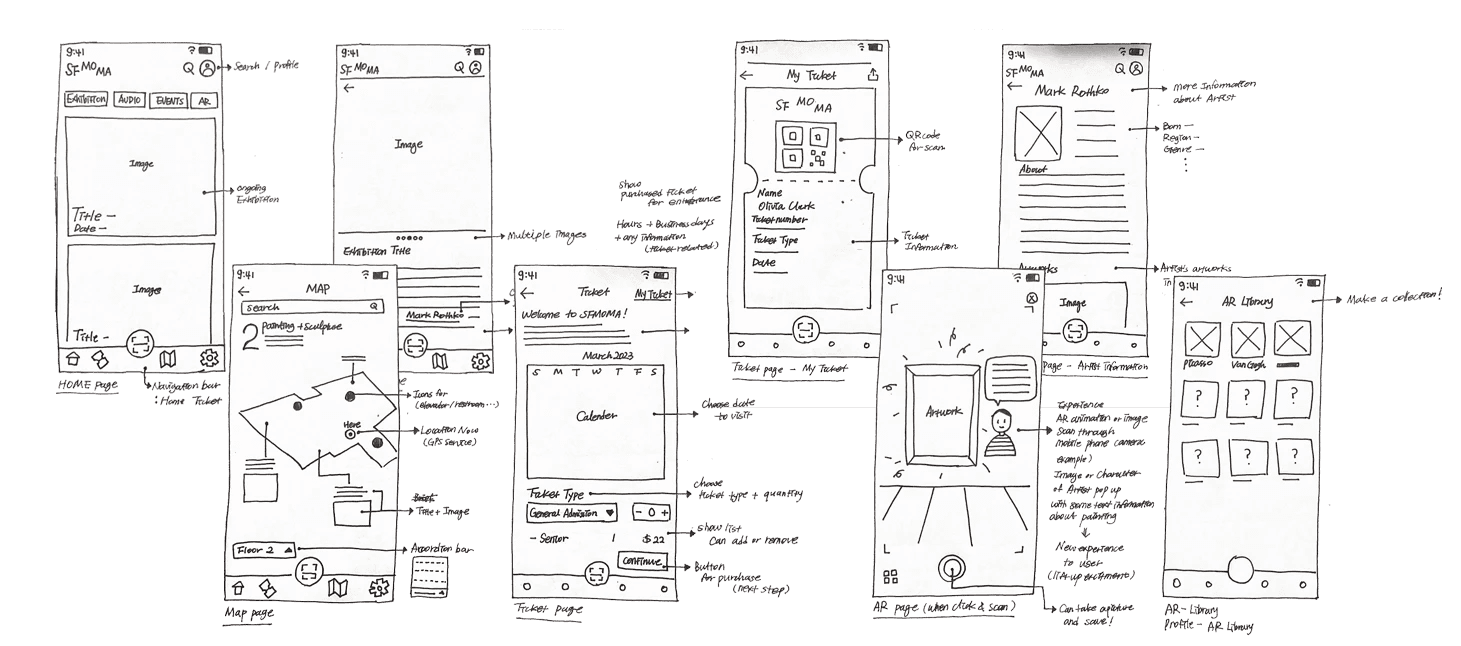
User Flow

↑ Click to see the image!
Wireframe
Mid-fidelity Design
After ideation sketches, I designed mid-fi wireframes to check interactions and flows between different screens on usability testing.
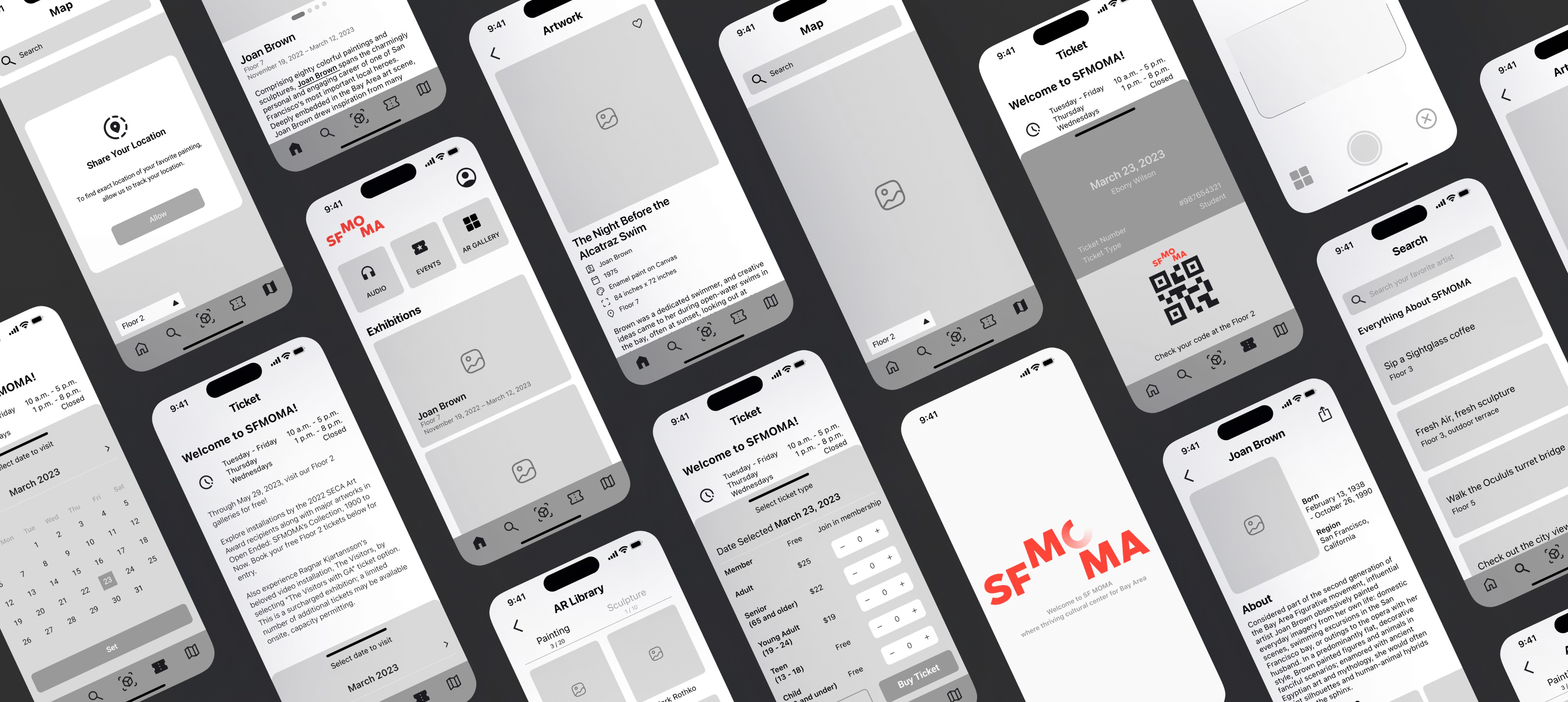
Usability Testing & Insights
Usability Testing and Iterations
I conducted usability testing with 5 participants who are matching to target user group. By analyzing testing results, I found its pros and cons of and went through 3 times of iterations until I make the final design decision.
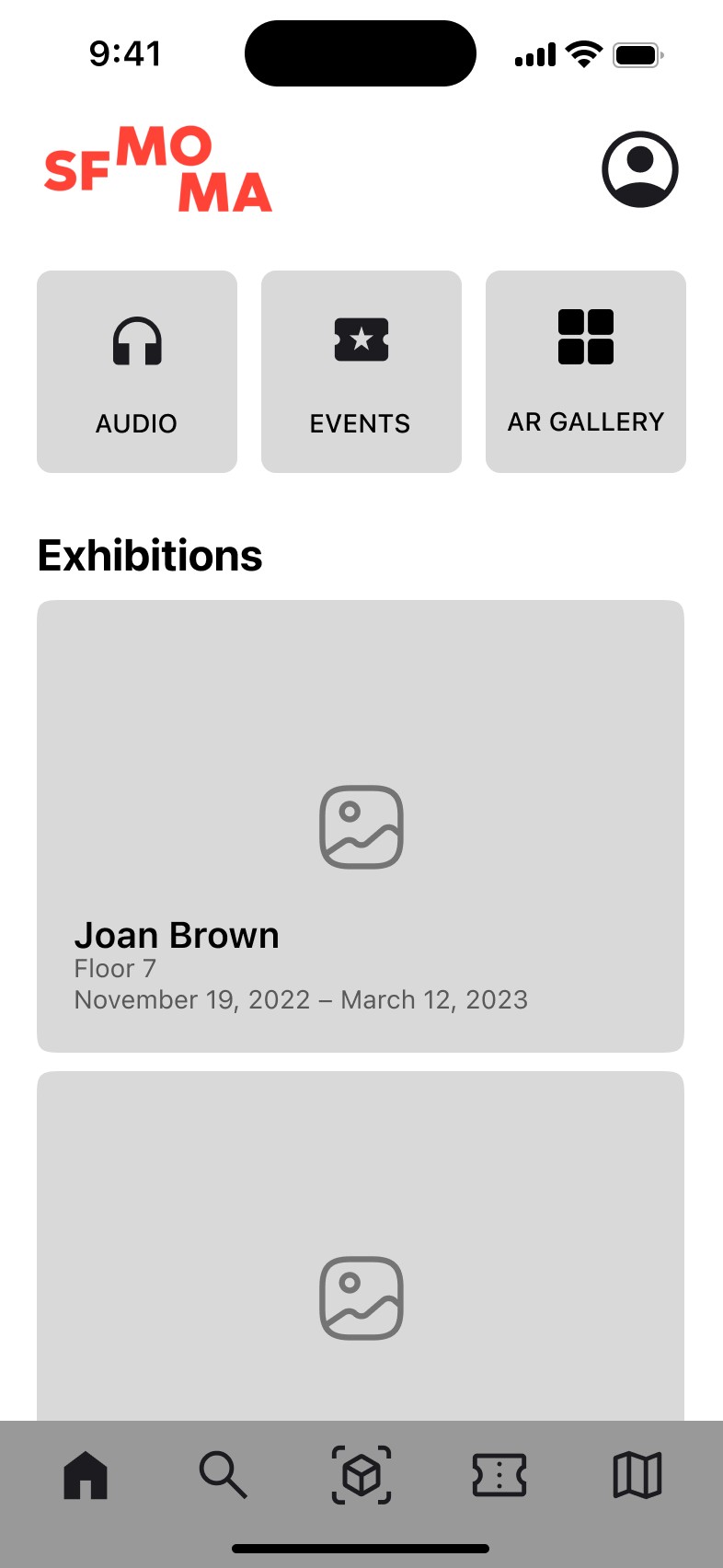
Wireframe 1
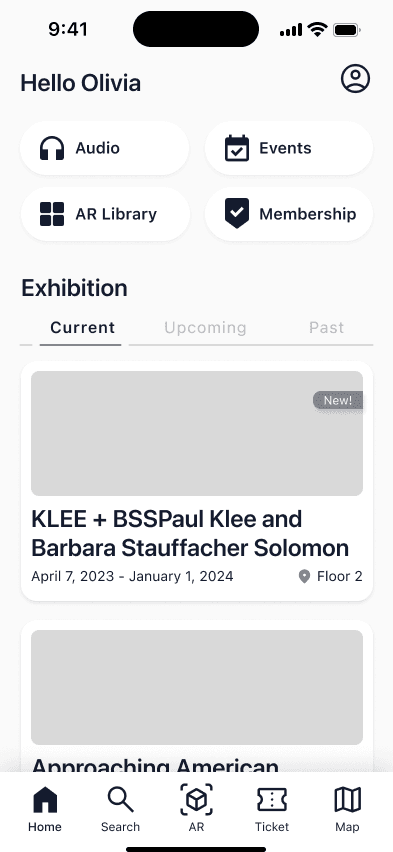
Wireframe 2

Wireframe 3
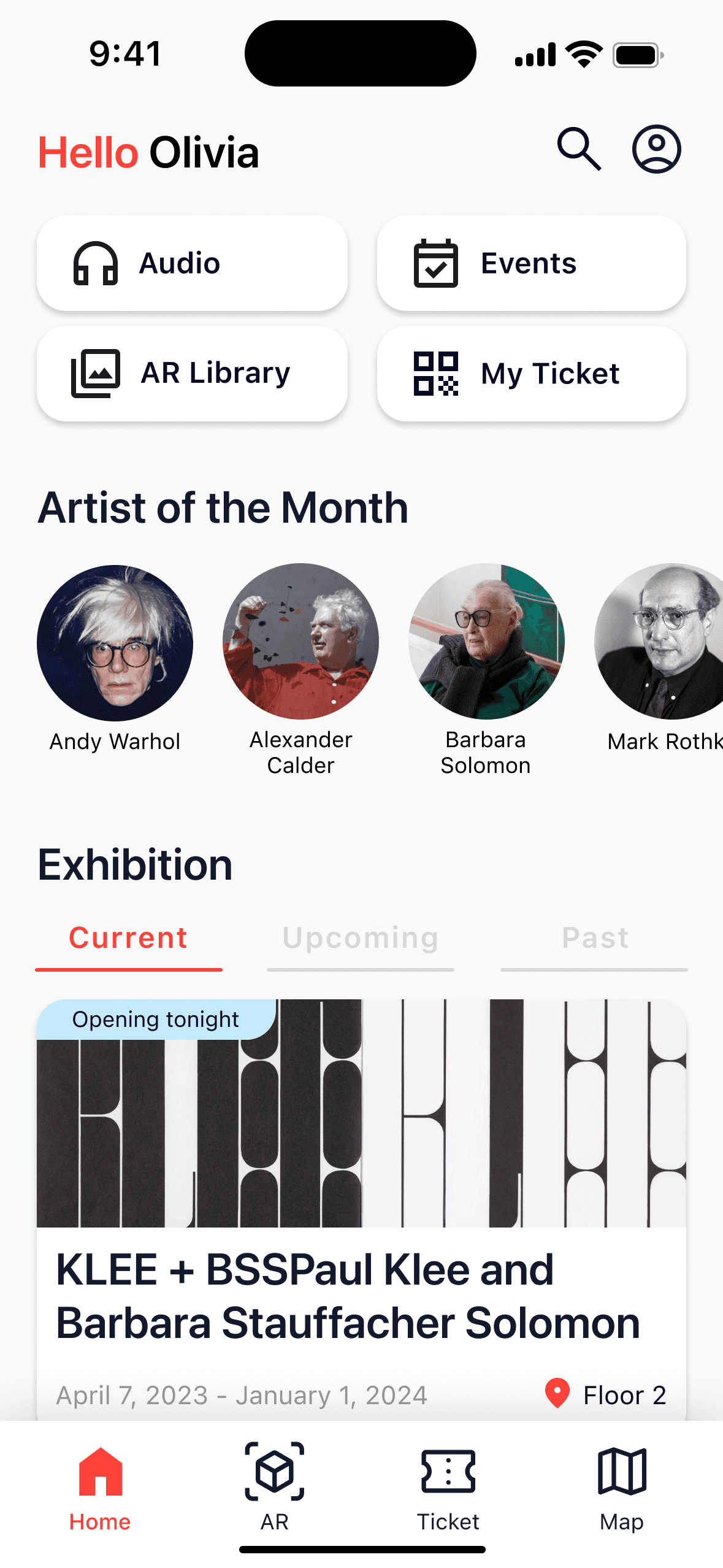
Final Design
Wireframe 1: Use of image
Clean layout with a clear visual hierarchy
Straightforward and simple arrangement
Overlapping text and image decrease legibility
Wteration 2: Card design
Card design improve information clarity
Organized exhibitions clearly by timeline
Improve design consistency and concern with efficiency of menus in navigation bar
Wireframe 3: Artists + Exhibitions
Quick access to most important features and artist visibility has increased
Visual components with clear color contrast grab user attention and interest
Design Improvements
Major Improvements: Home
Visual Clutter
Texts are difficult to read due to poor contrast and improper placement, requiring extra effort.
Information Obsolescence
Exhibition information are out-dated and negatively impact user trust and brand quality.

Now

Redesign
Exhibition organization
Allow user to see exhibitions availability by time.
Major Improvements: Exhibition Information
Vague CTA Button
Button 'Begin' is not obvious what action it's implying.
Text Heavy Interface Problem
Small images and heavy load of text increase cognitive overload. Without clear visual cues, user struggle quickly identify relevant content.

Now

Redesign
Media-Rich Design
Balance of images, icons, and text to guide user attention and engagement.
Applying Fitts' Law
Placing frequently used map and audio guide in easily reachable areas improves efficiency and reduces interaction time.
Major Improvements: Map
Dead-End Design
The static image of map lacks interactivity and usability, causing user frustration.
Contextual Disconnection
Absence of information making the digital map function no differently from a paper map.

Now

Redesign
Real-Time System
With animated directional cues, it provide user navigation to find the museum facilities.
Proximity Based Discovery
The 'AR Nearby' feature enhances discoverability, guiding users to closest AR artworks.
Design Concpet

AR Information
Solution 1
Build & Expand AR Art Collection
Find AR and add into own collection. Every new visits, user can add new AR artworks into collection.
Solution 2
Art & Exhibition Information
Explore exhibitions and artists before, during, or after your visit. With richer background stories and context, you’ll feel more informed and connected

Exhibition Information

AR Nearby

My Ticket
Solution 3
Enjoy The Museum Efficiently
Purchase ticket beforehand and skip the line. During visit, location service can help visitor to find and enjoy museum facilities, finding AR artworks as well.
Visual Design
Style Guide
I created a comprehensive design system that illustrates what was used in the final design.
This allowed me to maintain unified brand consistency by organizing standardized design elements, components, and guidelines


↑ Click to see enlarged image!
Lessons
Takeaways
01
Iteration always comes with improvements
While working on this SFMOMA Redesign project, I made a lot of changes and countless decisions. The iteration process was not always happy but it taught me how to refine the interface design, address accessibility concerns, and deliver a more satisfying experience to users by usability testing by incorporating their feedback on subsequent iterations.
02
Remind the point to do not get lost in the middle
It’s easy to lose the initial goal. The question that continuously resonated with me was, "How can I make art accessible and enjoyable for everyone?". This prompted a journey of exploration, leading to solutions that introduced the gamified AR experience. Through this approach, new form of storytelling was introduced, adding enjoyment and encouraging a deeper understanding and making connection with artwork.
Further Steps
01
Can't wait to see real-life demo of AR artwork
While creating the AR prototype with Spark AR, I became curious about how it would function in the museum setting. This project sparked my interest in learning Unity and exploring other 3D/AR programs. I'm looking forward to see taking partnership with artist and work with engineers who can bring this project to real-life!
02
Explore gamification techniques
One of the challenges that I faced was considering how to promote user engagement with AR feature. I realized interface and research for game should focus on how to make users more engaging. I want to spend more time exploring gamification techniques that can encourage visitors to collect artworks and stay with the app throughout their museum visit.
©2024 Biju baek
Go Back To Top
Thanks for visiting!
To fully enjoy this website, I recommend to view on desktop.
Made with love and a lot of coffee © 2025 Biju Baek
Let's chat!